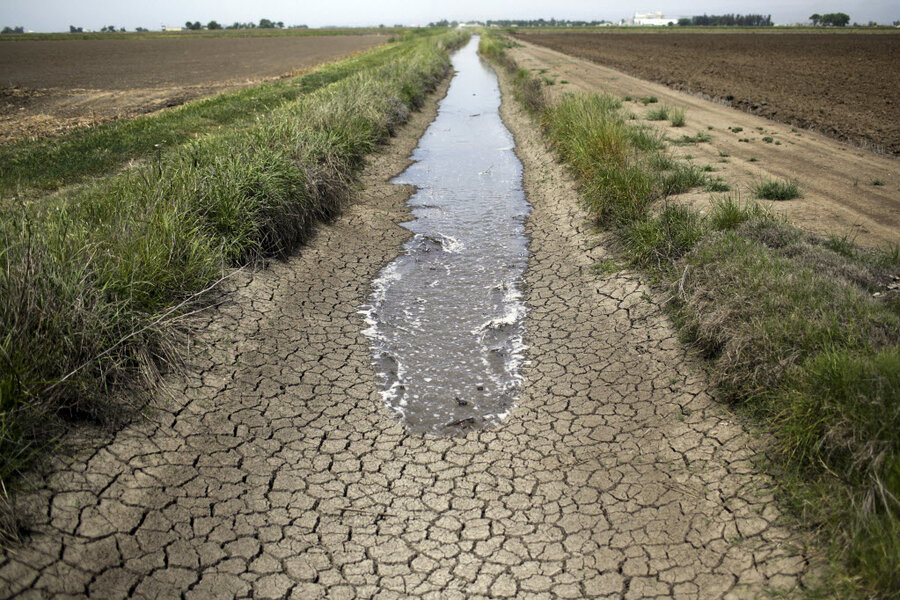Why heavy rains probably won’t do much good in drought-stricken Calif.
Loading...
| Los Angeles
Bizarre weather has dogged the West Coast this year: Wildfires and mudslides have occurred when they usually don’t, and now, unexpected drenching rains have been moving north through the Golden State.
Usually, much of California is dry except for the rainy season in the winter. And for the most part, it’s been a summer of record drought and heat. But this week, firefighters battling wildfires near Sacramento have enjoyed a few moments of respite as the rain has come down.
“This is just downright weird,” says Bob Bente, training manager for northern California’s Region 5 Smokejumpers in Redding, about two hours north of Sacramento. Nearby fire crews had heavy rains Tuesday night, he says.
In his 27 years of fighting fires, Mr. Bente says, he has never seen weather such as this. “I have fruit trees and in January, they were budding without any rainfall through the entire winter,” he says. Now, he adds, “we’ve got these heavy rains that we don’t ever usually get in August.”
Scientists confirm that the weather is anything but normal for the region. “These are just freaky weather patterns,” says Timothy Ingalsbee, executive director of Firefighters United for Safety, Ethics, and Ecology in Eugene, Ore.
This is producing a new normal for everyone, he points out: Farmers have to adapt to new growing seasons and less water, while residents must change their behavior. [Editor's note: The original version of this paragraph contained a quote that was attributed to Mr. Ingalsbee but was actually somebody else's. Also, the paragraph before this one has been revised to list a different organization with which Ingalsbee is affiliated.]
But can the rains help with the drought and fires?
The extreme dryness of the landscape makes it less likely that the precipitation will do much good, Ingalsbee says.
When the rain moves into low-lying areas, the parched ground and extremely dry air soak it up. “Much of the rain evaporates before it even hits the ground,” he points out.
The result is actually an increase in fire danger. “The thunderstorms pass through dropping a tiny bit of rain, but produce lots of lightning,” says Alex Sosnowski, senior meteorologist at AccuWeather in State College, Pa. Lightning strikes ignite fires, which is predictable, but in this current spell of dry thunderstorms, the number of fires is far above normal, he notes.
This is bad news for firefighters, he says: Although they have been fighting blazes since January, “we are really only just getting started with the real fire season.”
This will continue through the next few weeks, as the thunderstorms move out, Mr. Sosnowski says.
Many are pinning their hopes for relief on the potential appearance of the El Niño weather system, an occasional warming of the equatorial Pacific Ocean that brings the promise of thunderstorms and more rain. But predictions point to only a weak El Niño at best, Sosnowski notes.
While current conditions may be giving firefighters a whisper of relief, they offer little if anything in the way of drought relief, says Char Miller, professor of environmental analysis at Pomona College in Claremont, Calif. “The land is very dry; empty reservoirs and ready-to-burn forests will remain a marker of how deep this drought remains,” he writes in an e-mail.







